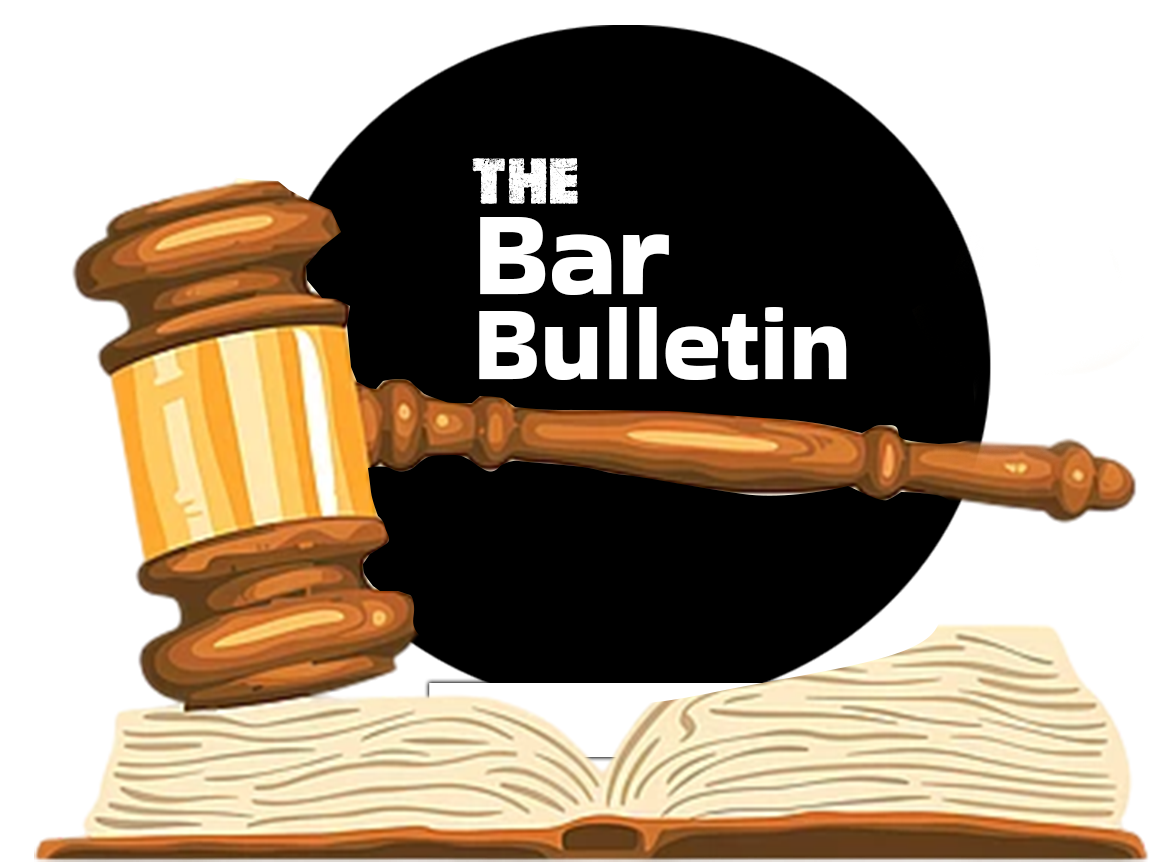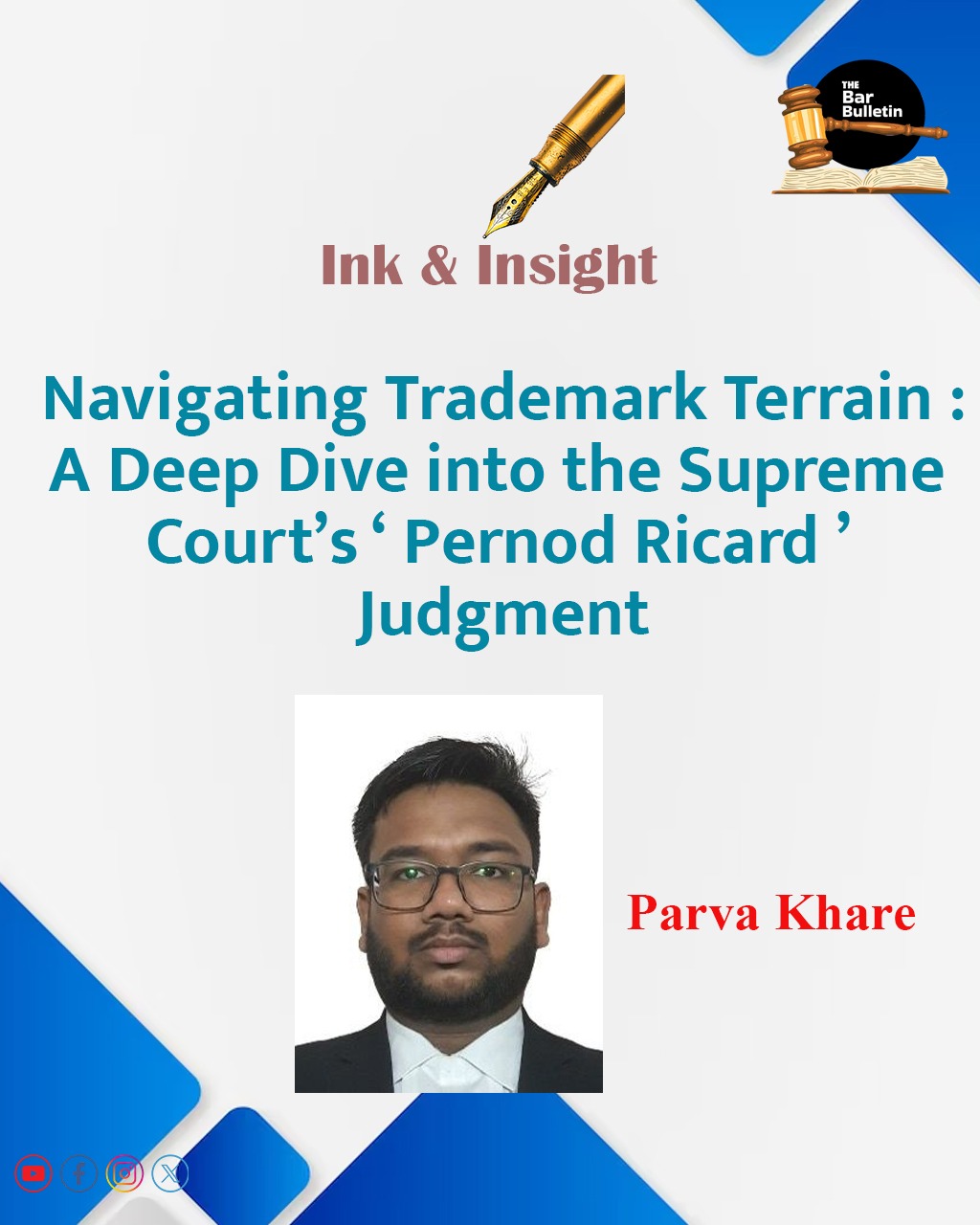Trademarks are vital tools for businesses, signifying origin, quality, and goodwill. They help consumers make informed choices, but their legal protection is complex, governed by national laws and judicial precedents. In Pernod Ricard India Private Limited & Anr. v. Karanveer Singh Chhabra[1] (“Pernod Ricard v. Karanveer”), Justices J.B. Pardiwala and R. Mahadevan of the Supreme Court provided crucial guidance on trademark infringement. Ruling on a dispute between two competing whisky brands, the Supreme Court reiterated Indian trademark principles, balanced the seemingly conflicting tests for infringement, and emphasized the need for timely disposal of cases.
Facts and background of the dispute
Pernod Ricard India Private Limited (“Pernod Ricard”) filed a suit against Karanveer Singh Chhabra (“Karanveer”) before the Indore Commercial Court for trademark infringement. The suit alleged that Karanveer’s ‘LONDON PRIDE’ mark was deceptively similar to ‘BLENDERS PRIDE’ and that its packaging mimicked the trade dress and colour combination of ‘IMPERIAL BLUE’. Pernod Ricard sought an injunction to stop Karanveer from using the infringing mark and packaging.
However, the Indore Commercial Court denied Pernod Ricard’s request for an interim injunction, a decision later upheld by the Madhya Pradesh High Court (“MP High Court”). Both Courts found that the word ‘PRIDE’ is a common industry term (publici juris) and not exclusive to one brand. They also ruled the packaging was distinct and that discerning consumers of premium whisky were unlikely to be confused.
Pernod Ricard appealed to the Supreme Court, arguing that the lower courts had erred on the following grounds:
i. The Courts improperly dissected the marks to focus only on the word ‘PRIDE’, contrary to the anti-dissection rule.
ii. The Courts failed to apply the test in Cadila Healthcare Ltd. v. Cadila Pharmaceuticals Ltd.[2] (‘Cadila v. Cadila’), which assesses similarity from the perspective of an average consumer with imperfect recollection.
iii. The Courts failed to recognize that the similar trade dress, including the colour scheme and get-up, constituted an act of passing-off.
Supreme Court’s Analysis
Pernod Ricard v. Karanveer, the Supreme Court analysed Indian trademark law to establish comprehensive guidelines for infringement cases. While every case depends on its own facts, the judgment provides crucial tests for determining infringement. Key aspects of the judgment are discussed below.
Balancing Anti-Dissection Rule and Dominant Feature Test
The Supreme Court analysed two key tests for trademark infringement: the Anti-Dissection Rule and the Dominant Feature Test. The former is a statutory rule requiring marks to be viewed as a whole, while the latter is a judicial principle focusing on the mark’s most dominant element. The Supreme Court clarified that although these approaches seem to conflict, they are not mutually exclusive.
The Supreme Court held that while the dominant feature of a trademark can be the focus, it must always be analysed as part of the mark as a whole. Identifying a key feature is simply a step in assessing the overall impression, not a separate test. This method is designed to mirror how an average consumer with an imperfect memory actually experiences brands. In a real-world scenario, a buyer doesn’t conduct a side-by-side comparison; they rely on their imperfect recollection of a mark’s most memorable features.
This balanced approach is not unique to India and aligns with international legal precedent. A similar position has also been followed by the US Court of Appeals, Federal Circuit in Re: National Data Corporation[3]. In UK, the High Court of England and Wales, in Whyte and Mackay Ltd. v. Origin Wine UK Ltd. & Anr.[4], held that a dominant feature can be given more weight in the analysis of infringement, especially when other parts of the trademark are negligible, but always while considering the mark in its entirety.
Applying these principles, the Supreme Court reached a clear conclusion that the trademarks ‘BLENDERS PRIDE’ and ‘LONDON PRIDE’ were not deceptively similar. The Supreme Court reasoned that the dominant features of the marks were the words ‘BLENDERS’ and ‘LONDON’, not the common element ‘PRIDE’. Because these dominant features are distinct, the Supreme Court concluded that consumers were unlikely to be confused.
No Exclusive Rights over Generic or Descriptive Terms
The Supreme Court reiterated a core trademark principle: generic, descriptive, or laudatory terms common to an industry cannot be monopolized. The only exception is if a term acquires a “secondary meaning,” i.e., it has become exclusively and distinctively associated in the public’s mind with a specific brand.
The Supreme Court found the term ‘PRIDE’ to be a common laudatory word in the liquor industry, making it publici juris. This conclusion was powerfully reinforced by Pernod Ricard’s own past admission to the Trade Marks Registry (“Registry”), where it had disclaimed exclusive rights to the word ‘PRIDE’ alone, claiming rights only in the full ‘BLENDERS PRIDE’ mark, at the time of its registration.
The Supreme Court noted that Pernod Ricard had previously lost a similar infringement lawsuit against the mark ‘ROYAL CHALLENGE AMERICAN PRIDE’. That initial loss was upheld by both the Punjab and Haryana High Court and the Supreme Court on appeal. Because the issue had already been decided against them, the Supreme Court ruled that Pernod Ricard was now legally estopped—or prevented—from re-arguing and claiming exclusive rights to the word ‘PRIDE’.
The Average Consumer Test
The Supreme Court once again emphasized the importance of the “average consumer” in trademark law. The Supreme Court reiterated that trademark similarity must be judged from the perspective of an average consumer with an imperfect memory. This is a person who is reasonably well-informed and observant but is not an expert conducting a forensic analysis. This test works hand-in-hand with the Anti-Dissection Rule and the Dominant Feature Test. The Supreme Court explained that an average consumer:
i. Forms an overall impression of a trademark.
ii. Does not dissect or analyse each individual element.
iii. Is often influenced by the mark’s most dominant feature.
The Supreme Court emphasized that the average consumer recalls trademarks with imperfect accuracy. Crucially, they almost never have the benefit of a side-by-side comparison of competing products when making a purchasing decision. However, the Supreme Court stressed that a consumer’s level of attention changes depending on what they are buying. A person will naturally be more careful and attentive when purchasing something expensive or important (like a car) than when buying a low-cost, everyday item (like a pack of gum). This reality is central to how trademark similarity should be judged.
The Supreme Court, applying the average consumer test, held that since the products in issue were ‘premium’ and ‘ultra-premium’ whisky, the consumers were likely to exercise higher caution, and less likely to be deceived.
Hybrid and Untenable Pleadings by Pernod Ricard
Pernod Ricard’s case against Karanveer was built on two central arguments. First, the name ‘LONDON PRIDE’ was deceptively similar to their trademark ‘BLENDERS PRIDE’. Second, the packaging and design of ‘LONDON PRIDE’ copied the trade dress of another brand of Pernod Ricard, ‘IMPERIAL BLUE’.
The Supreme Court ruled that the ‘cherry-picking’ approach by Pernod Ricard, to blend the elements of two different marks to claim infringement against Karanveer, is not legally permissible. A plaintiff cannot combine different marks to create a “super-mark” that doesn’t actually exist in the marketplace.
Test for grant of Injunction
The Supreme Court reiterated that there is no “straight-jacket formula” for trademark infringement; each case must be decided on its own facts. Even when a case seems strong, the remedy of an injunction is not automatic.
To grant an interim injunction, courts must consider the five-factor test established in the landmark case American Cyanamid Co. v. Ethicon Ltd.[5] (“American Cyanamid”):
i. Serious question to be tried / triable issue
ii. Likelihood of confusion / deception
iii. Balance of convenience
iv. Irreparable harm
v. Public interest
The absence of even one of these factors is sufficient grounds to refuse an injunction.
The Supreme Court noted that the Indore Commercial Court and the MP High Court had correctly denied Pernod Ricard’s request for an injunction, as Pernod Ricard had previously failed to obtain a similar injunction against the mark ‘ROYAL CHALLENGE AMERICAN PRIDE’; and Pernod Ricard had itself waived any exclusive rights in the word ‘PRIDE’ before the Registry.
Power of Appellate Courts to interfere
Finally, the Supreme Court emphasized the limited role of an appellate court. Its job is not to re-evaluate the evidence and substitute its own judgment for that of the trial court. An appellate court should only interfere if the lower court’s decision was plainly unreasonable or contained a clear error of law.
Because the view taken by the Indore Commercial Court and the MP High Court was possible and tenable, the Supreme Court found no reason to interfere with their decision to deny the injunction.
Post-Sale Confusion Doctrine
The Supreme Court also took the opportunity to discuss the Doctrine of Post-Sale Confusion. The Supreme Court noted that this doctrine, while well-established in jurisdictions like the US and UK, is still in its early stages in India. To explore the concept, the Supreme Court referenced a recent UK Supreme Court judgment, Iconix Luxembourg Holdings SARL v. Dream Pairs Europe Inc. & Anr.[6].
This doctrine addresses confusion that happens after a product is purchased, and not at the moment of sale. It’s designed to protect a brand’s reputation from the public’s perception of its products. The classic example involves counterfeit goods:
• A person knowingly buys a fake luxury handbag. The buyer is not confused.
• However, when they carry the bag in public, others who see it might be confused, believing the counterfeit to be genuine.
• This confusion among the public dilutes the original brand’s goodwill and prestige.
The goal of the doctrine is to correct the harm caused when counterfeit products are given a deceptive appearance of legitimacy.
Ultimately, the Supreme Court decided that this doctrine was inapplicable in Pernod Ricard v. Karanveer, as the products in question—bottles of whisky—are intended for private consumption, not public display like a handbag or a watch. Therefore, the risk of widespread public confusion after the sale was minimal. The Supreme Court left a “more comprehensive analysis” of the doctrine for a future, more suitable case.
Implication of Supreme Court’s Judgment on Trademark Law Jurisprudence in India
In addition to finally settling the dispute regarding interim injunction between Pernod Ricard and Karanveer, the judgment in Pernod Ricard v. Karanveer also has significant implication for the trademark law jurisprudence in India.
As stated above, the Supreme Court provided necessary guidance on balancing the ‘Anti-Dissection Rule’ and the ‘Dominant Feature Test’, as well as laid down the pathway for future adoption of the ‘Post-Sale Confusion’ Doctrine.
In addition to this, the Supreme Court also deprecated the ‘inordinate delays’ in intellectual property disputes. The Supreme Court noted that in majority of intellectual property disputes, the ‘battle’ is only for an interim injunction, and the final adjudication of the dispute is kept pending for years. In this particular case, the Supreme Court directed the Indore Commercial Court to finally decide and dispose of the matter in four months. This judgment provides the necessary push to the litigants in intellectual property disputes to move ahead from their contests for interim injunction and prioritise the final determination of the rights and liabilities in such disputes.
[1] 2025 SCC OnLine SSC 1701
[2] (2001) 5 SCC 73
[3] 224 USPQ 749
[4] [2015] EWHC 1271 (Ch)
[5] (1975) AC 396
[6] [2025] UKSC 25

